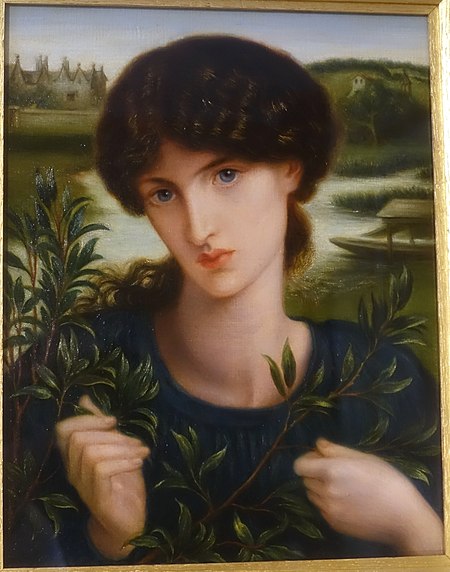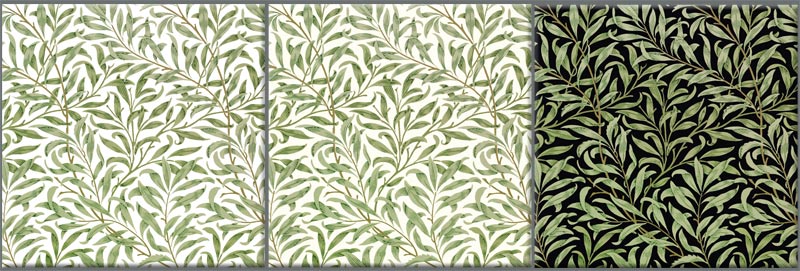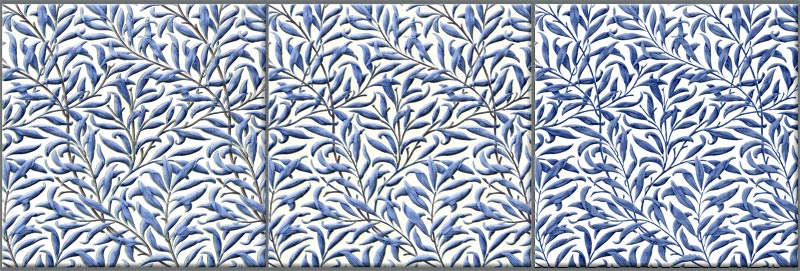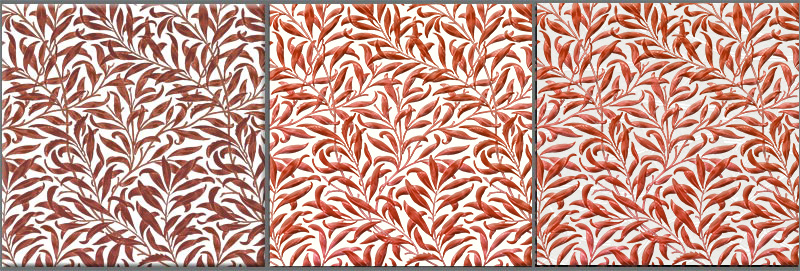
Tiles based on William Morris Willow and Willow Bough
William Morris Textile Designs De Morgan Arts & Crafts Victorian Medieval

William Morris Textile Designs De Morgan Arts & Crafts Victorian Medieval
The Forest Catalog Articles How to Order Tile Site Map Search Contact
I am writing among the gables and rook-haunted trees, with a sense of place being almost too beautiful to live in... ~William Morris, 1872


William Morris Kelmscott Willow Bough, white background

Jane Morris, Willow bedroom at Kelmscott Manor. The Willow pattern was inspired by the willows that graced the banks of the river near Morris's favored fishing spots near his home in the Cotswolds.


Water Willow with Kelmscott Manor in the background, by Dante Gabriel Rossetti. Jane Morris, model.


Kelmscott Willow Bough Tiles


Crackle Tile Options

Willow is emblematic of Morris's love for his family and Kelmscott Manor; it is the house that Morris most loved and where he lived the longest. He maintained rooms in town, but returned often to the "Old Grey House by the River" in the Cotswolds, exploring the countryside and spending hours fishing from the river bank or in a small boat. Willow Bough was inspired by the trees the graced the banks of his favorite fishing spots in the nearby streams and rivers.
Willow Bough is not the original Willow, although they are often confused. I have also done Morris's Original Willow pattern and a Modern border tile version. For the sake of keeping these all straight, I'm calling Willow Bough, Kelmscott Willow Bough in these pages.
Architecturally, Kelmscott is a Tudor house, not Arts & Crafts (That would be Red House, his first married home that he built for himself and his wife, Janey). Kelmscott was built around 1570 with later additions into the seventeenth century. Morris rented the estate first with Dante Gabriel Rossetti and continued to keep it until his death. Jane bought the house a few months before her death in 1914.
After the dissolution of Morris, Marshall, Faulkner and Co. ('The Firm'), Morris founded his own company, Morris and Co., setting up shop at 449 Oxford Street. By this time, Morris's attention had turned to woven fabrics. He employed Louis Bazin, who created the first Morris textile fabric, Willow, in 1877, using a Jacquard Loom in a workshop near Queen Square. Although Willow was first implented in fabric, it later became one of Morris and Co.'s most popular wallpaper designs. Morris himself preferred tapestries and embroideries; he created wallpapers and fabrics in order to make his patterns accessible to more people.
He did however, revisit Willow over time.
Kelmscott Willow is available in green, blue, and blue and green, and red (dark and autumn). Background options are white, black, cream / parchment or crackle background.
Designer: William Morris
Colors: Some combinations are shown below: Original green on white, cream and black background. Blue on white or cream background. Blue with blue stem on white. Dark red on white, Autumn red on cream, Autumn red on gray crackle.
Sizes: 6 inch ceramic tiles.



6 inch square tiles: $66 each
8 inch square tiles: $88 each

Also see: